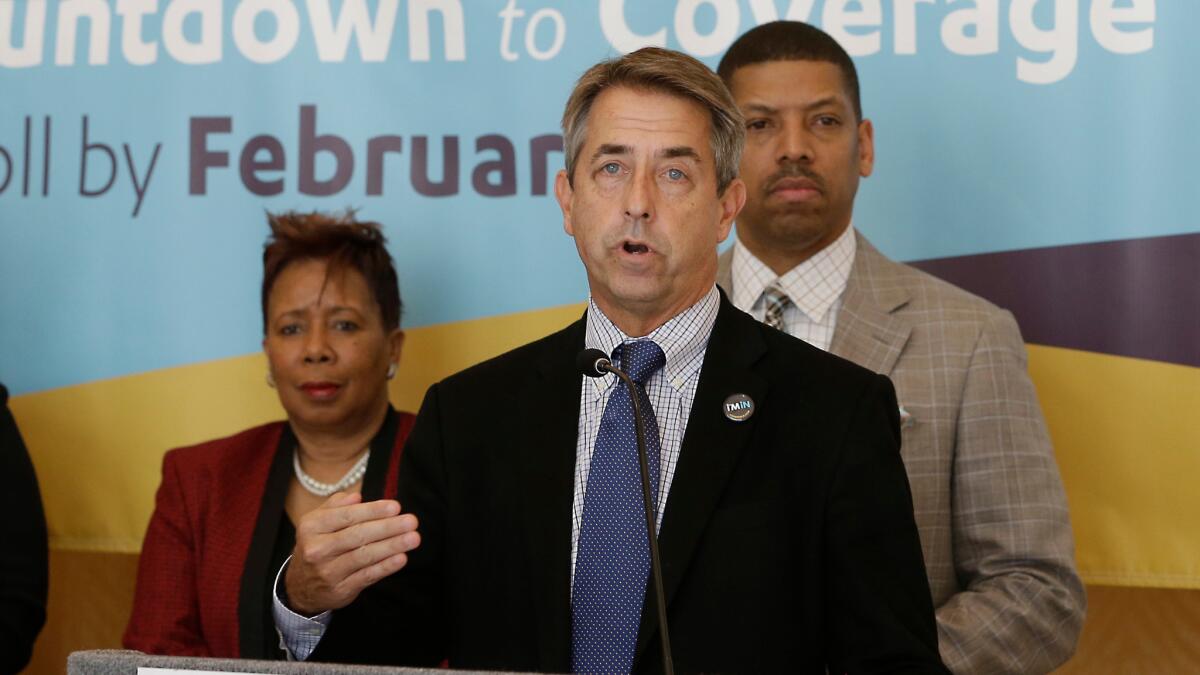Editorial: Covered California shows it’s not immune to big premium increases

Californians shopping for individual health insurance policies have seen some of the smallest increases in the nation over the last two years, thanks in part to the efforts of Covered California, the state’s insurance exchange established under the 2010 federal healthcare law (better known as Obamacare). But Covered California’s customers face an average hike of 13% for next year, a return to the bad old days of double-digit premium increases.
The increases affect a small subset of the insurance market: people who aren’t covered by a large employer’s group plan, and who aren’t eligible for Medi-Cal or Medicare. Covered California sells policies to about 1.4 million of them, and about 90% of that group qualifies for federal subsidies that offset at least part of the higher costs.
Premiums will go up more than 17% on average at Anthem Blue Cross and nearly 20% at Blue Shield, the two insurers with the most customers in Covered California. Those plans tend to offer larger networks of doctors and hospitals than their competitors, and as a result have attracted customers who demand more care, according to insurance officials. The average increase for other plans is considerably lower, typically in the range of 6%-7%.
Covered California, which negotiates with insurers over premiums, insists that the problem isn’t insurer greed. The average profit margin in 2017 will be a mere 1.5%, the exchange asserts. Instead, a chunk of the increase — up to 5% for some insurers — stems from the end of two temporary measures in Obamacare that were designed to hold down premiums by guarding insurers against losses. That shouldn’t recur in future years.
A more disturbing trend is the accelerating growth in medical costs, a long-term problem that has no easy solution. One cause is higher demand for care, which isn’t necessarily a bad thing — it reflects the fact that many uninsured people now have coverage. Another is the surprisingly large percentage of enrollees who sign up for coverage in mid-year, suggesting that some are trying to game the system by obtaining insurance only when they need expensive treatment. Federal and state efforts to address this problem should start to show results next year.
A third factor is a surge in spending on prescription drugs caused largely by a number of expensive new specialty medications. Slowing the rise in the cost of any other form of care is problematic, however, because of the risks posed to the development and availability of treatments. Prodded by the 2010 law and pressure from employers, the healthcare industry is exploring a number of ways to provide more incentive to cut costs while improving the quality and efficiency of care. But those efforts will take years to bear fruit.
In the meantime, consumers have only one option for holding down premiums: switching to a lower-cost plan. That’s a real possibility for most Californians, given how much higher the increases at Anthem and Blue Shield were than at other plans. But doing so is likely to mean selecting a new doctor from among a smaller and potentially less attractive set of choices. That’s not an appealing prospect for many, but it’s what passes for comparison shopping in a market where consumers have too little power.
Follow the Opinion section on Twitter @latimesopinion and Facebook
More to Read
A cure for the common opinion
Get thought-provoking perspectives with our weekly newsletter.
You may occasionally receive promotional content from the Los Angeles Times.










